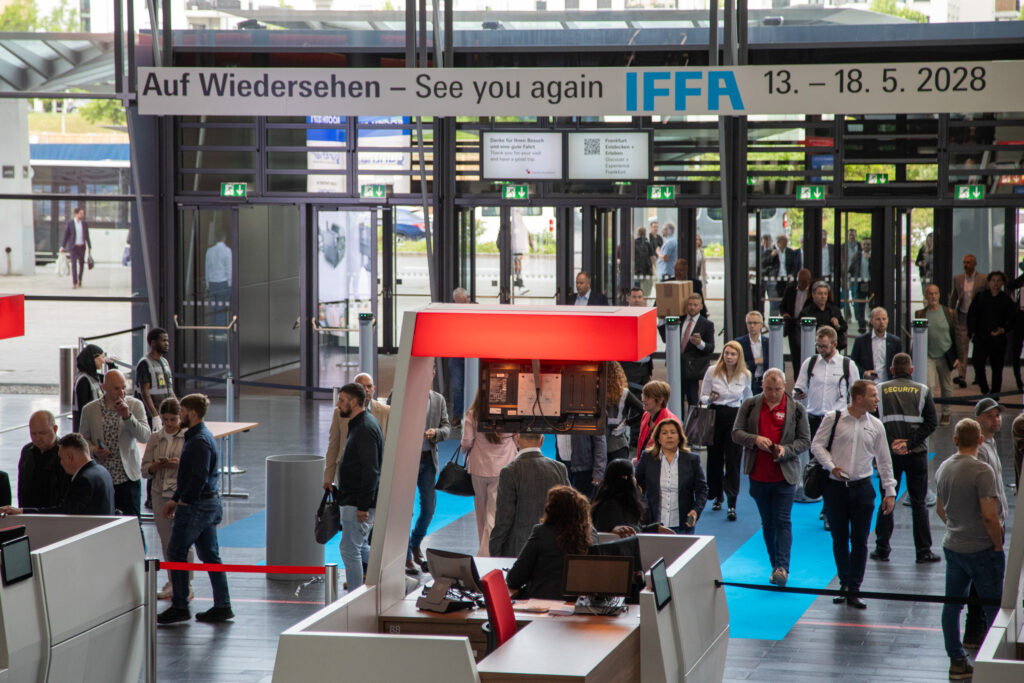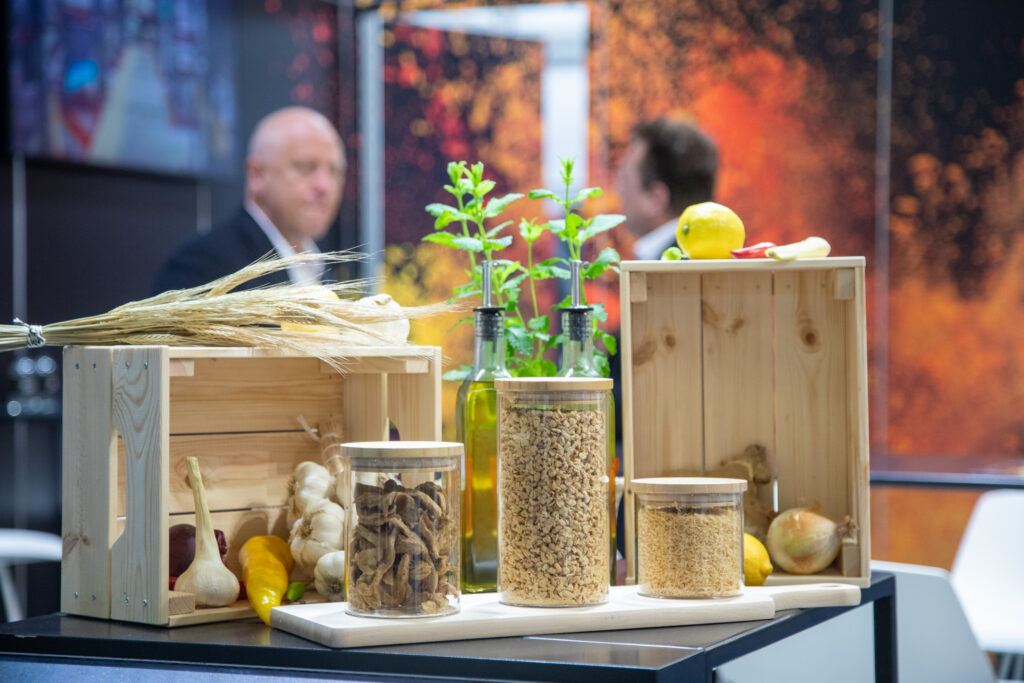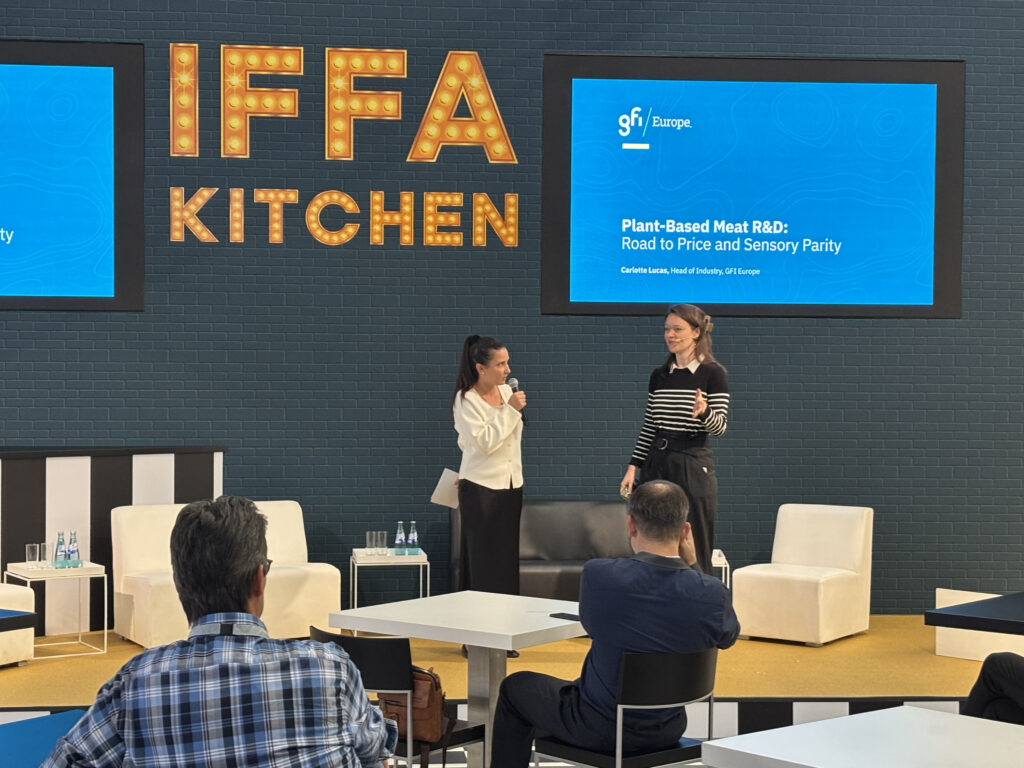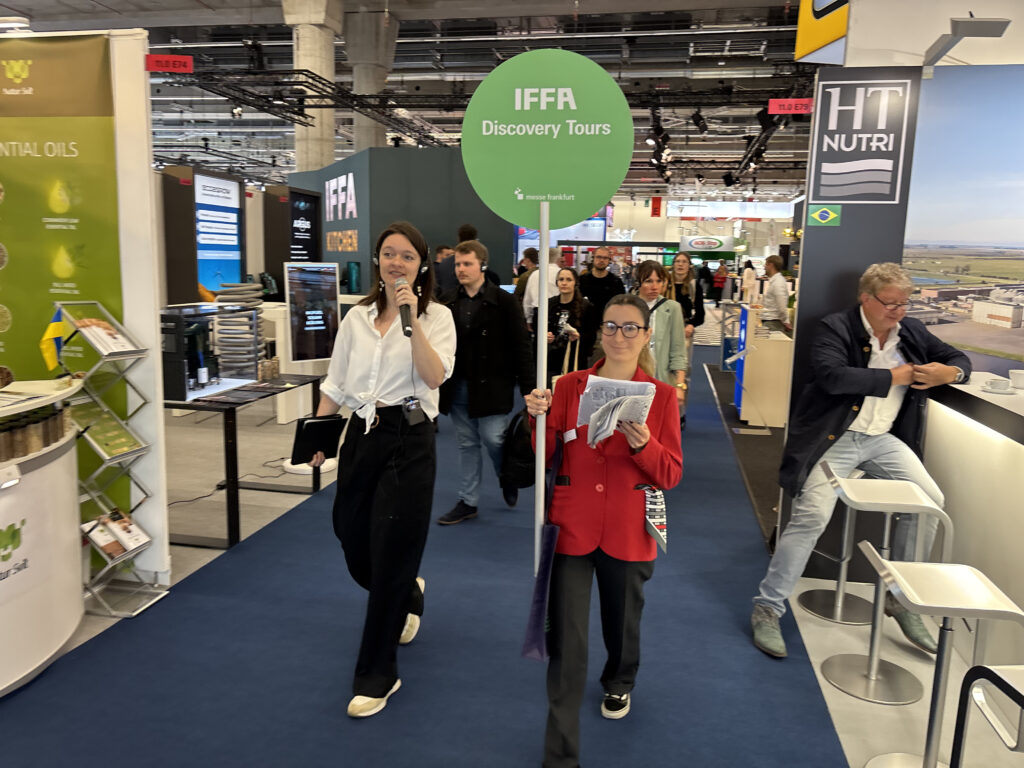Alternative proteins return to centre stage at the world’s largest meat industry trade fair
The world’s largest conventional meat fair provided valuable insights into how alternative proteins are edging closer to the mainstream.
22 May 2025

The world’s largest conventional meat fair provided valuable insights into how alternative proteins are edging closer to the mainstream.
The Good Food Institute Europe returned to the IFFA trade fair last week, three years after we first partnered with organisers Messe Frankfurt to highlight the opportunities that plant-based, fermentation-made and cultivated meat and ingredients hold for conventional meat companies.

This global industry, with its infrastructure, supply chains, and commercial knowledge, can play a huge role in scaling up these foods.
My colleagues and I went to IFFA to demonstrate alternative proteins’ enormous commercial potential to companies across this sector, as well as the value they can bring by developing affordable, delicious and nutritious products.
Being back on the ground among more than 60,000 visitors from 144 countries presented a huge number of opportunities, and it was clear that there is still a great deal of interest.
Showcasing Europe’s food innovators

Alternative proteins were even more firmly on the agenda than in 2022, with a dedicated section – The World Of New Proteins – bringing together innovators and enabling people to see cutting-edge technology and try the latest recipes for themselves.
It was also great to see fermentation make it to IFFA for the first time, with a significant presence of manufacturers and ingredients suppliers showcasing exciting new mycoprotein products.
Our booth, which we shared with partners ProVeg International and the German Association for Alternative Sources of Protein (BALPro), was a hub for anyone who wanted to learn more, from startups to large-scale manufacturers.

I gave a presentation at the IFFA Kitchen, explaining that Europe is the world’s largest market for plant-based meat and that, with taste and price still the largest consumer barriers, huge innovation and cost reduction opportunities exist across the supply chain.
However, my daily discovery tours – the most popular tours across the entire event – offered the most value to visitors, allowing them to meet exhibitors face to face.
Representatives of fermentation companies ProteinDistillery and Revyve, for example, explained how they were developing ingredients from yeast that could help address functional challenges like binding – potentially valuable to a wide range of food companies.
Collaboration with conventional meat sector
Jeff Tripician, CEO of Dutch cultivated meat company Meatable – who himself has decades of experience in the conventional meat industry – also told visitors how these two sectors can work more closely together. He talked about how cultivated meat companies can collaborate with the conventional meat industry, rather than being opponents – a refreshing and important viewpoint following the polarisation of recent years.
It was also fascinating to see how many equipment manufacturers now see the plant-based space as an opportunity.
My tours included companies like Coperion and Bühler, which produce the extrusion equipment needed to transform raw materials such as soy, pea and oat into plant-based meat.
Germany’s holac, which originally developed cutting and slicing technology for the conventional meat and cheese industry, showcased new equipment designed specifically for plant-based meat – another great example of how a wider group of companies are already benefitting from protein diversification.
It was interesting to note that another area attracting the attention of visitors outside the alternative protein hall was blended meat – a product that combines animal-based and plant-based ingredients.
While this is currently a small category in terms of products and sales, the conversations at IFFA indicated there is growing momentum behind blended meats, which could go on to serve as a gateway for more conventional producers to explore alternative proteins.
Alternative protein sector matures
I left my second visit to IFFA with a sense that while the initial alternative protein hype has passed, the industry has now matured, and the interest we are now seeing is based on something a little deeper than in 2022.
There is now a more evolved sector made up of a diverse group of companies either approaching commercialisation or demonstrating that there are already tangible economic benefits.
We have a long way to go before these products are within the reach of a sufficient number of consumers to realise their potential to reduce emissions, boost food security and create future-proof jobs.
Governments and public bodies need to step up and increase open-access research funding and access to infrastructure, but the wider food industry’s contribution – particularly that of the conventional meat industry – is also vital.
The interest I saw at IFFA now needs to be turned into investment in developing delicious and affordable alternative protein products, helping us build a more sustainable and healthy food system for everyone.

